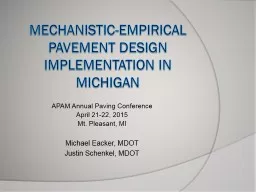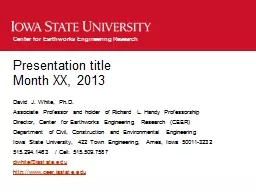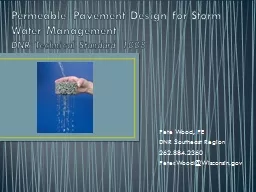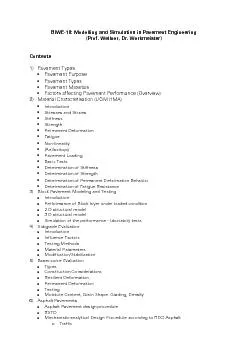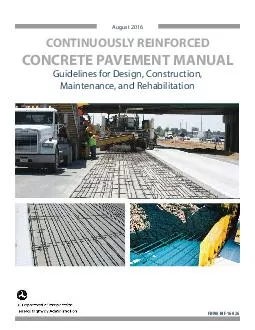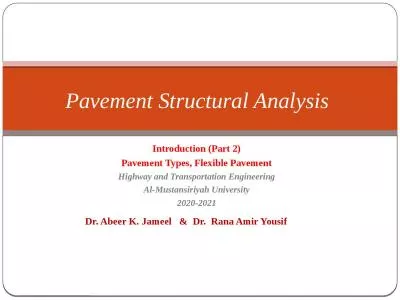PPT-Mechanistic-Empirical Pavement Design Implementation in Mic
Author : ellena-manuel | Published Date : 2016-03-25
APAM Annual Paving Conference April 2122 2015 Mt Pleasant MI Michael Eacker MDOT Justin Schenkel MDOT Outline What is ME ME TimelineWork to Date Calibration MDOT
Presentation Embed Code
Download Presentation
Download Presentation The PPT/PDF document "Mechanistic-Empirical Pavement Design Im..." is the property of its rightful owner. Permission is granted to download and print the materials on this website for personal, non-commercial use only, and to display it on your personal computer provided you do not modify the materials and that you retain all copyright notices contained in the materials. By downloading content from our website, you accept the terms of this agreement.
Mechanistic-Empirical Pavement Design Implementation in Mic: Transcript
Download Rules Of Document
"Mechanistic-Empirical Pavement Design Implementation in Mic"The content belongs to its owner. You may download and print it for personal use, without modification, and keep all copyright notices. By downloading, you agree to these terms.
Related Documents

